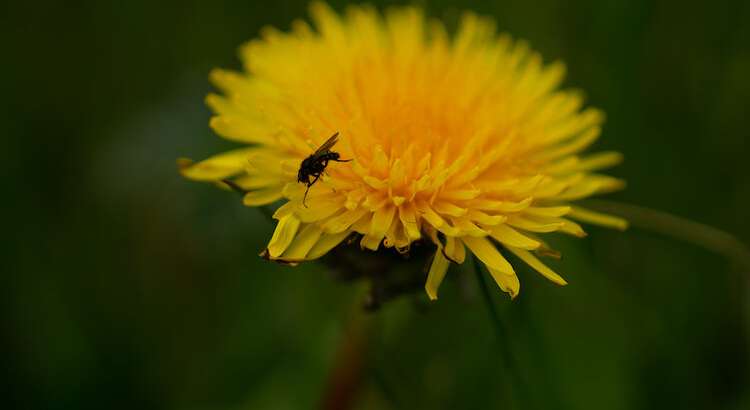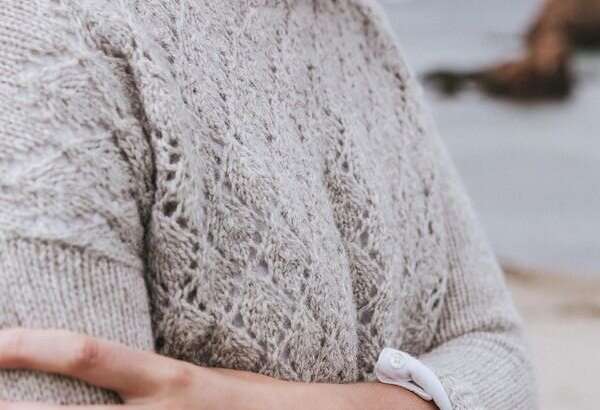September 23 2019
One of the things I love about Langsoond yarn is the natural shades. By spinning the coloured fleeces together and blending some of the coloured with the natural white fleece, the Natural Fibre Company creates a lovely naturally blended palate for me. However, last year there were more white Shetland fleeces in relation to coloured so I have a large quantity of white yarn which has been just crying out to be dyed.
At the end of June this year I travelled to the mainland to attend a Natural Dye retreat at Gartur Stitch Farm. The event was hosted by Kat Goldin and her family and was taught by the lovely Julia Billings (AKA Woollenflower) and assisted by the equally lovely Julia of Black Isle Yarns. We spent the weekend discussing plants and their dyes, dying techniques, foraging and dying yarns and came away with 32 mini skeins of different colours. I learned a lot over the weekend and over this summer I have been experimenting with dying Langsoond with locally grown plants.

Several of the plants we looked at on the retreat either don’t grow in Shetland or aren’t available in large quantities and here on the croft in Burra its extremely difficult to get plants to grow as the land stretches from the top of a very windy hilltop down towards the sea. I have always been very interested in trying to find ways to use local materials and vegetation that is readily available and becoming more self-sufficient and have been experimenting with vegetation from the croft and surrounding area such as nettles, rhubarb, dockins (dock) as well as with avocado seeds I have been saving for several months.

Natural dying is a long process, it starts with gathering plant material, which has to be steeped for several hours in boiling water and then simmered for a while and left to cool (I leave it overnight). Then the yarn is added to the dye bath, simmered and left to cool (again I leave it overnight). So it is several days from when you collect the dye material to when you have skeins of yarn that can be twisted and labelled.

The only chemicals that I have used in the process is Alum (Aluminium sulphate) to mordant some of the yarn (the yarn is steeped in a solution before adding to the dye bath, this helps the yarn take up the colour and improves colourfastness) and I have modified some of the colours with copper water and iron water to vary the shades. I try to exhaust the dye bath and then the plant material is put onto the compost heap.
I have loved experimenting with these plant dyes and seeing what colours I can achieve from the land, very often the colours you think you will get from a plant is very different to what you actually get and I have noticed changed in the colours achieved as the summer has gone on.
Currently the naturally dyed Langsoond yarn is available as 100g skeins (220m/238yds) in DK (double knit) weight and will be on sale for the first time at the Maker’s Market at the Anderson High School in Lerwick on Saturday 5th October 2019 from 11 am – 4 pm as part of Shetland Wool Week. After this event (and once I have had a chance to recover from Shetland Wool Week!) I will sell the remaining skeins through my online shop. To get a notification straight to your inbox when the shop will be updated you can subscribe to my newsletter on the Home Page of the website. Unfortunately I won’t have the latest batch of yarn from last year’s clip for sale at the market as it hasn’t arrived from the spinners yet. As soon as it arrives it will be available to order online.

I am really excited that my friend Bunchy has just written her first book on naturally dying wool with plants (and specifically plants that grow in Shetland).

She has been dying wool with locally grown plants from her dye garden and surrounding areas for many years and has built up a substantial knowledge of the subject. The book has just arrived and she is taking orders through her website www.spindriftcrafts.com. You can also buy her yarn on her Etsy site here.
I am looking forward to Shetland Wool Week, if you are going to be there and see me around please come and say hello. I still have two or three batches of yarn to dye and then I will have a break from dying, and will finally be able to cook in my kitchen again!

Happy Knitting!




